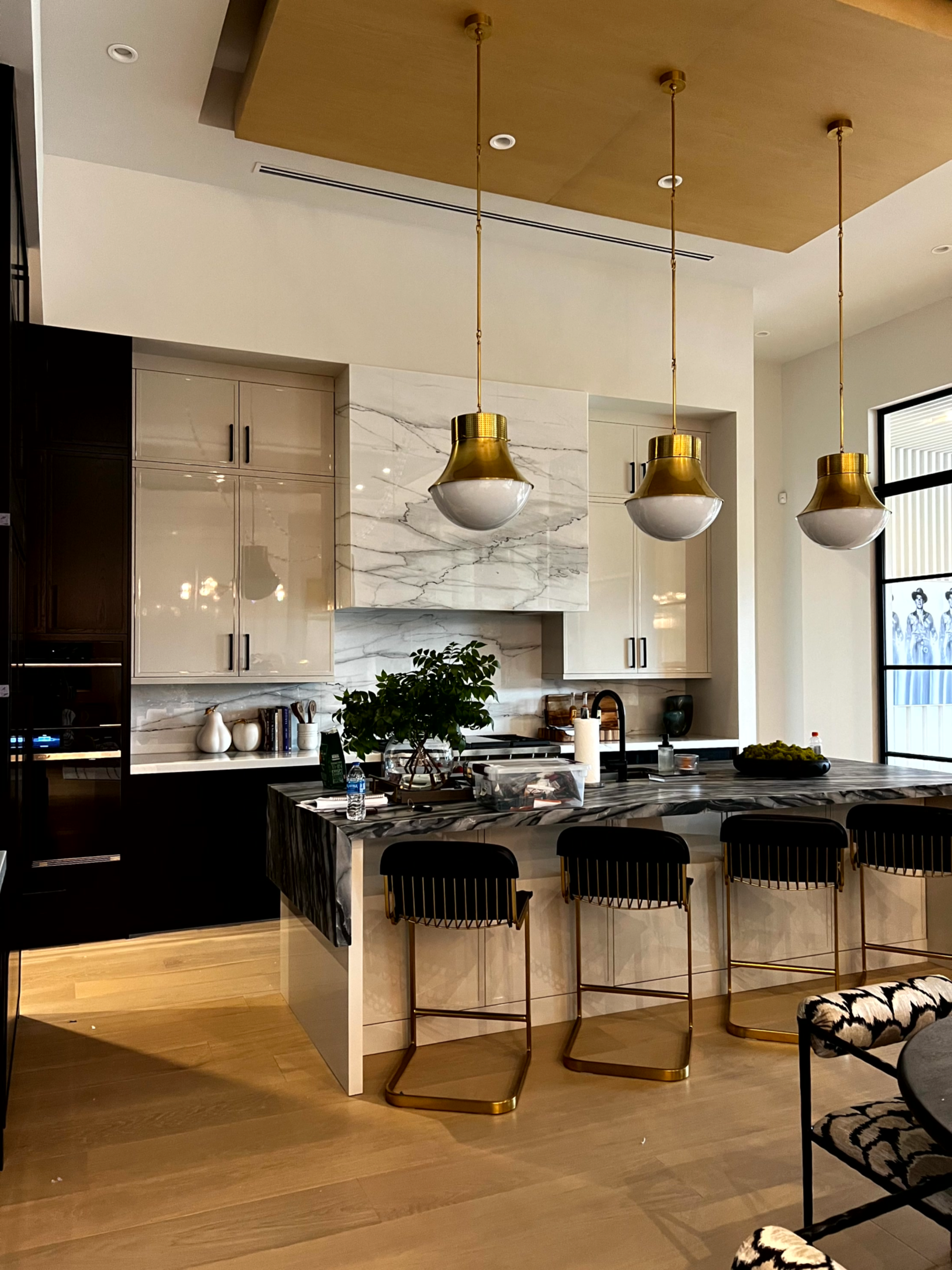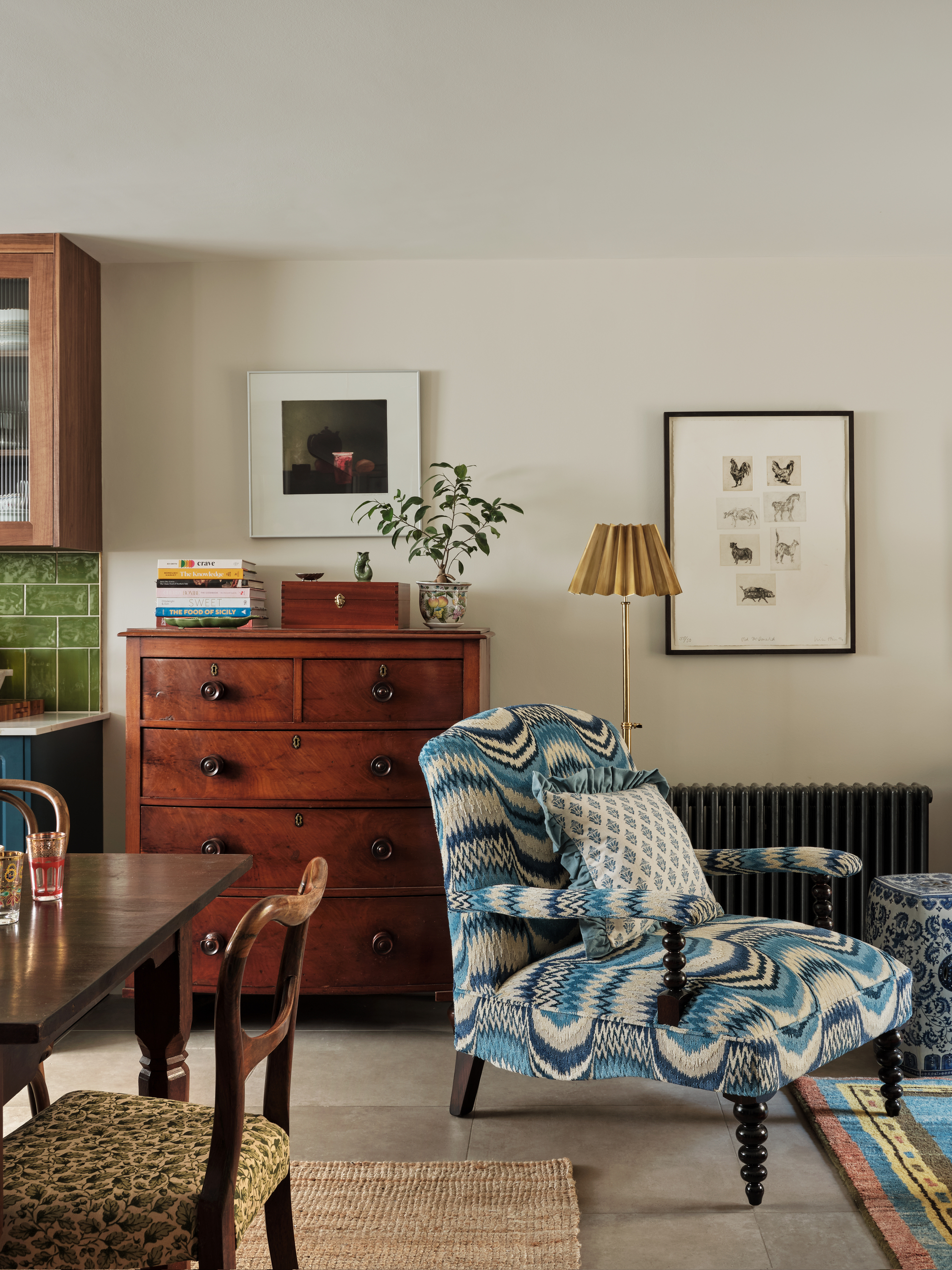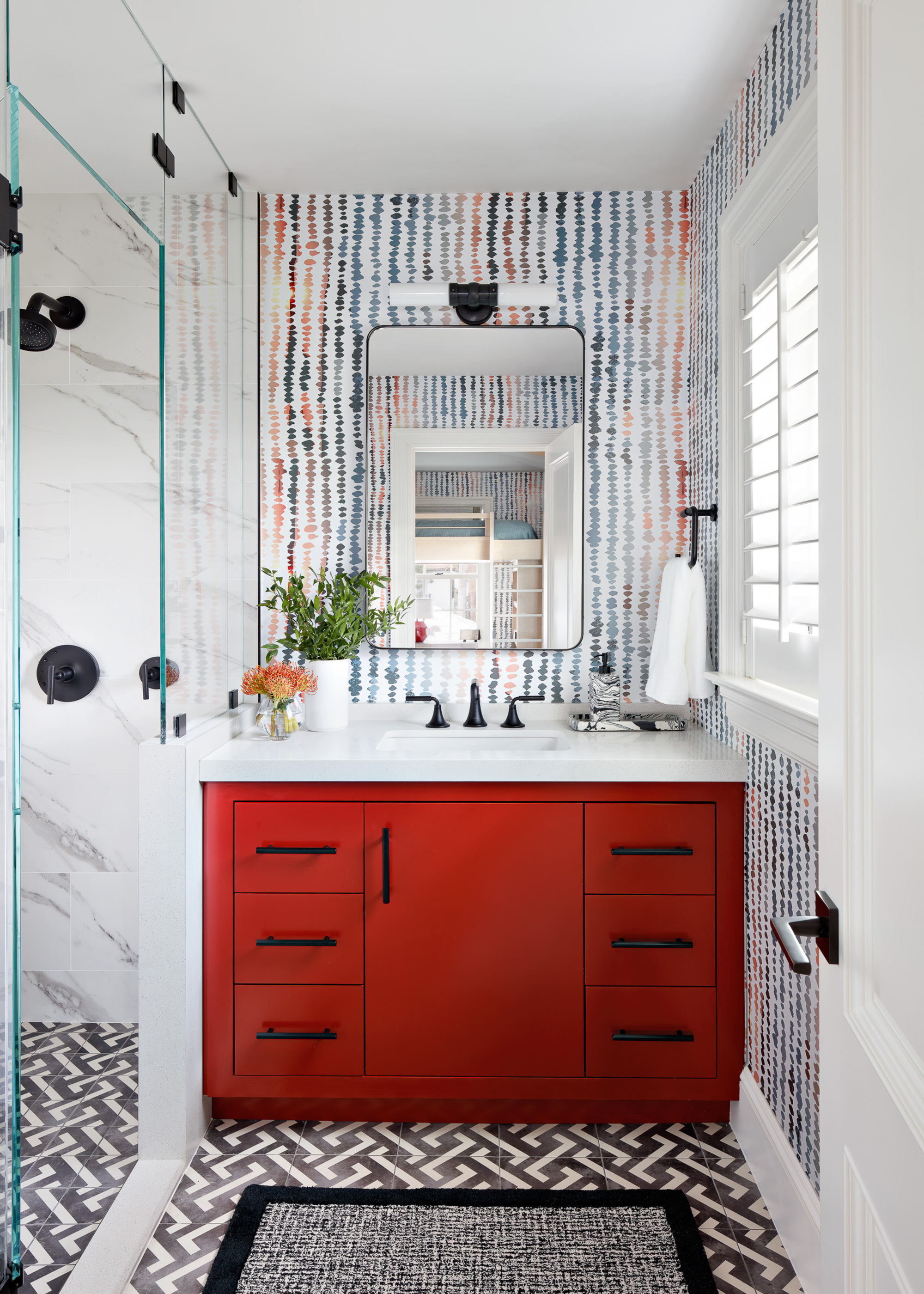
Do you long for a home where your decor works in perfect harmony? The midimalism trend is your answer. As the name suggests, this design idea embodies a happy medium between bold maximalism and restrained minimalism. The result? A balanced "Goldilocks" style that nestled between these two antithetical extremes.
Now, we know what you're thinking. Isn't an interior design trend that falls between minimalism and maximalism just the norm? Not quite. Midimalism — also sometimes referred to as "middle-malism" — is more nuanced than that. It combines elements of maximalism (think bold prints, playful patterns, and joyous colors) with the refined simplicity of minimalism (grounding shades, clean lines, and empty space). It's about striking the perfect balance between the two diametric opposites, imbuing a home with character and personality while still retaining an air of sophistication.
Keen to learn more? We spoke to interior designers to find out why midimalism is the perfect middle-ground for decorating. From textural accents to intentional pattern layering, here's how to embrace midimalism in your home.
What is midimalism in interior design?

To understand midimalism, first, a reminder of its adjacent cousins. Minimalist interior design is marked by calm, serene interiors that are generally easy on the eye. Minimalists believe less is more, so they opt for a pared-back aesthetic. Maximalists, on the other hand, support the ethos that more is more. They channel that through their interiors, embracing color, pattern, and plenty of decor for a style that's bright, bodacious, and eclectic.
Midimalists fall somewhere in the middle. They combine plenty of pattern and color, but in a more restrained way than maximalists, ensuring that an overall sense of calm and serenity still prevails. Just like minimalism and maximalism in interior design, however, midimalism can look different depending on your personal tastes and preferences.
"Midimalism is the evolution of minimalism. It's about refinement without austerity," says Isy Jackson, founder of Cheltenham Interiors. "It celebrates clean lines and simplicity, but with a richer, more lived-in quality. Think of it as minimalism with warmth, where restraint meets texture, tone, and subtle sophistication. It’s the art of editing without erasing character."
If you're someone who doesn't identify with either of these design styles but admires aspects of both, then this trend is for you. "This term offers a balance between the two," says interior designer Rebecca Hughes. Here's how to embrace the trend in your own home.
How to Incorporate Midimalism in Your Home
1. Layer textures

Visually, midimalism should look less "busy" than maximalism. A great way to channel a mix of variation without overdoing it with a layered texture design. Think natural stones for a raw, matte finish juxtaposed with metallic accents or lustrous finishes.
"Midimalism is all about tension: serene but not sterile, intentional but not impersonal," says Isy. "Start with a restrained color palette — creamy neutrals, earthy browns, warm greys — and layer in materials that bring quiet drama. Think natural stone with honed or leathered finishes, tactile textiles like bouclé or brushed wool, and wood with visible grain. You can also balance clean walls with patterned upholstery or artworks that bring in tone-on-tone texture rather than bold contrast."
Take the kitchen above, for example. The high-gloss cabinets add depth and interest to the space without competing with the marble hood or the gold ceiling fixture. Each component feels intentionally placed, adding an element of visual intrigue without competing with its neighbors.
2. Embrace statement accessories

When you enter a midimalist's space, there will always be a few statement accessories that stand out. These are more overt than the ones you'd find in a minimalist's room, but there won't be as many competing decor accents as you'd find in a maximalist space, either.
Take the space above. The living room accent chair, with its wavy blue pattern, is the most visually arresting detail, offering a beautiful focal point for the eye. It's fun and characterful, yet still sophisticated and elegant.
"Adding statement accessories to a home is a wonderful way of bringing personality and character into a space," says Rebecca. "When incorporating statement pieces, think about the space you’re working with. For instance, high ceilings mean lighting can be larger, while a large floor area calls for a statement rug to ground a space. Mixing accessories from a range of periods is a brilliant way to create a layered look, making a home feel like it has organically evolved over time."
3. Mix patterns with “plain”

One of the best ways to channel a midimalist design style is by using patterns alongside "plain". This might mean a backdrop of neutral walls to allow patterned upholstery to stand out, or carrying the colors of a small-scale print wallpaper through your surrounding furnishings and decor.
"Midimalism is about layering bold choices with classic ones," says Mark Tremblay, president of Marc-Michaels Interior Design. "In the space above, we chose a bold red, lacquered vanity as the focal point of this bathroom. The sleek, modern design of the piece balances out the maximalist color choice. The patterned wall and floor tile add another layer of maximalism, while clean, white trim and classic black hardware ground the space."
To pull off a similar look, consider "sandwiching" a room with pattern and blocks of neutral color for a harmonious effect. Think "pattern sprinkling", as opposed to pattern drenching.
4. Consider bold ceiling ideas

Midimalism embraces bold decor ideas, but avoids overwhelming a space. A great way to do just that is by decorating the ceiling. The space above our heads doesn't immediately jump out when you enter a room, and yet, it's also a brilliant way to add an element of surprise and intrigue to a design that errs on the maximalist side.
"In 2025, the statement ceiling, often known as the ‘fifth wall’, is absolutely on the rise," says Rebecca. "A beautiful ceiling design seamlessly ties a space together, adding an element of drama and personality." Take inspiration from the space above and paint your ceiling a contrasting shade to your walls to make it stand out, or consider incorporating ceiling wallpaper ideas to add pattern above your head. It introduces a maximalist decor idea in a smaller dose so that it feels more refined.
FAQs

Will the midimalism trend last?
Trends, by virtue of their being, are ever changing, but it can be difficult to differentiate between a fleeting trend and one that will make a more lasting impact on the world of design. Where, then, does midimalism fall, and is it a style worth embracing?
Isy firmly believes midimalism is set to last. The term, she says, is born out of a natural inclination many of us have to lean towards balance when decorating. It's an aesthetic that has existed long before we even had a label to describe it.
"Midimalism reflects a broader shift toward longevity and intentionality in design," says Isy. "People seek refuge from overstimulation, and homes are becoming sanctuaries. Midimalism's emphasis on quality over quantity, and on touchable, grounded materials, means it isn’t just a fleeting trend — it’s a lasting philosophy."
For a home that's characterful yet calming, striking yet sophisticated, and wonderfully eclectic yet sincerely elegant, let the tenets of midimalism guide your next decorating project. This style has harmony and balance at its core, and we're certain it's a trend that's set to endure.







